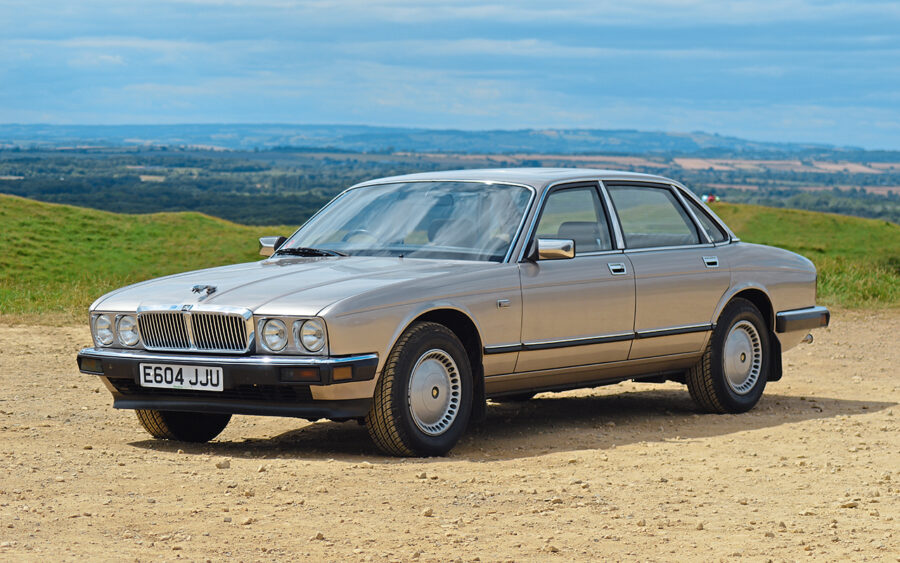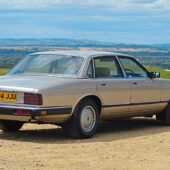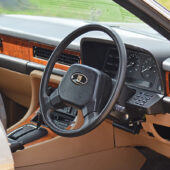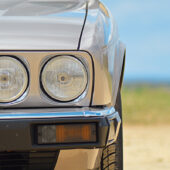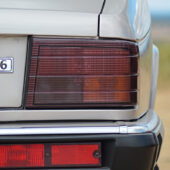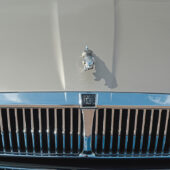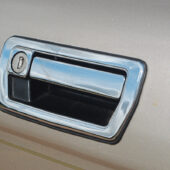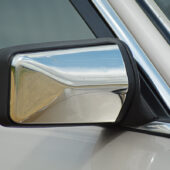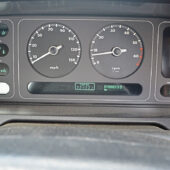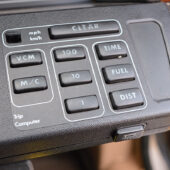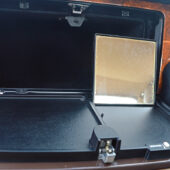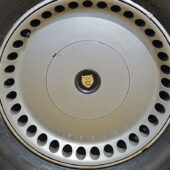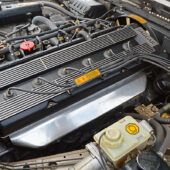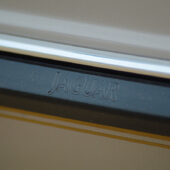One of Jaguar’s biggest design challenges was creating a worthy successor to the much-loved XJ – a process that eventually led to the XJ40
Words: Paul Wager Images: Paul Walton
If any Jaguar can be said to have had a tricky start in life, it’s the XJ40 – the model that famously prompted the resignation of Norman Dewis over a ‘discussion’ as to whether or not the newcomer was production-ready. Even Sir John Egan, the man credited with Jaguar’s 1980s renaissance, has admitted that one of his few regrets was not starting again with the XJ40. The car was tainted by early tales of unreliability, subsequently expanded via the magic of urban rumour; but in reality the car came good in the end. Good enough, in fact, for its successors – the X300 and X308 – to be based largely around the same underpinnings.
While we’re on the subject of quality issues, let’s not forget the BL era at Jaguar, which gave us the Series 2 XJs – cars that in their darkest days fell woefully short of the quality and reliability of even the early XJ40s. And today, of course, the XJ40 has emerged from the shadows, with Jaguar fans recognising what a significant car it was for the company. With neglect and disinterest taking all the shabbier examples across the weighbridge to the pub car park in the sky, values of the finest survivors have been increasing in recent years. At long last, a well-preserved XJ40 is now a sought-after classic and is seen as a fine way to travel.
Despite the rapturous reception that the original XJ received in 1968, Jaguar management was well aware even by the early 1970s that a follow-up would eventually be needed – and that it would have to be very good indeed. In fact, work on what would become the XJ40 began as early as 1972, with Nick Hull relating in his fascinating work, Jaguar Design, that the early proposal presented to the BL board was essentially a hybrid of the current XJ shape and the more modern style of the XJ-S. The archive photos showing the XJ-S nose grafted on to the XJ saloon actually look surprisingly good, if a little Lancia-like. As Hull relates, the original plan had been to have the car ready for release by 1977.
The design was subsequently revised with a ‘six-light’ side treatment (three windows per side), but a further BL showing with the newly-appointed chief, Geoffrey Robinson, resulted in the project being deferred. Robinson’s suggestion was that competing proposals should be commissioned from outside stylists – a first for Jaguar, where styling had hitherto been under the iron control of Sir William Lyons. Pininfarina, Giugiaro and Bertone were invited to submit proposals, while the in-house concept was tidied up and given more modern detailing.
The competing designs were rather as you’d expect, with the Pininfarina effort having a Quattroporte look to it, the Bertone one looking like a distorted Lancia Gamma, and the Giugiaro proposal resembling an anonymous American saloon. Sadly, a management viewing of all four saw the in-house proposal slated by management, with the changes by then leaving it looking like a Vauxhall Royale.
Work continued with the inevitable delays imposed by the BL structure, and it seems that the decision was taken to more or less start again. A formal British Leyland brief for the model was issued in 1977 under the codename ‘LC40’, with a proposed launch date of autumn 1982. This slow progress, meanwhile, resulted in a stop-gap facelift of the existing car, giving it enough of an update to keep it in production until the new model was ready; but with in-house resources stretched thinly, work was commissioned out to Pininfarina and the end result was the XJ Series 3.
In many ways, the success of the Series III made life even more difficult for the XJ40 development teams, since it set the bar so very high in terms of refinement and handling. Despite the age of the underlying platform, the car was still winning group tests against some very modern German competition.
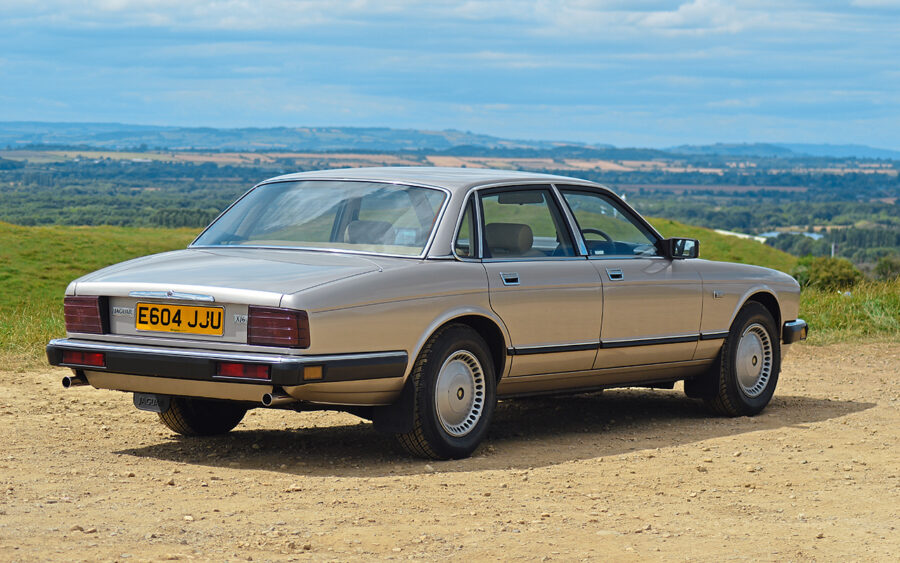
By early 1980, the basic styling of the XJ40 was finally approved by the BL board, just a few months before John Egan took the reins. That same summer it was announced that the release date had slipped to 1984, but by the October the structural bodyshell engineering had been completed and was passed to Pressed Steel. November 1980 saw the interior and final body styling being signed off, with early prototypes running and driving by July of the following year.
Come 1984, however, and the company was being forced to decide between privatisation and the launch of the new car. Egan’s original plan had been to debut the crucial newcomer first and then perform the flotation on the back of that success. But in practice, the British government was keen to see Jaguar Cars broken away from BL and privatised, and so the launch of the XJ40 was once again deferred, eventually taking place in September 1986.
The XJ40 was much more than a simple restyle, with the ‘chassis’ also being redeveloped for the first time since the launch of the original XJ. The double wishbone layout was retained at the front, but with the control arms faced rearwards instead of forwards to allow them to be anchored to a stiffer part of the bodyshell and better locate the subframe. At the rear, the traditional Jaguar IRS was reworked to adopt a pendulum system, which allowed fore and aft movement of the lower wishbone’s inner fulcrum whilst retaining its lateral stiffness. And under the bonnet, the long-serving XK engine was finally pensioned off in favour of the new AJ6 design.
Launching a brand new car with a brand new engine would have been a step too far for a company the size of Jaguar, something that Egan realised when he hit upon the cunning plan of first launching the AJ6 in the newly developed XJ-S Cabriolet. The low production volumes of the Cabriolet would allow Jaguar to gain real-world feedback on the new engine, but in a car which sold in far fewer numbers than the XJ40 was expected to, meaning that any problems in service would be manageable.
It proved to be a sensible plan, too. Egan recalls that that in any quantities above two or three engines per day, the AJ6 proved to be unrefined and rough, and subsequently needed to be virtually hand-finished. This paid dividends in the long run though, as the problem could be addressed before the launch of the critically important XJ40 – and it was discovered that by addressing engine mountings and production tolerances, the issue was solved.
At launch, the XJ40 was offered only with straight-six engines, the crash structure ‘chassis legs’ in the engine bay being too close to accommodate the V12 engine. There’s a delightful urban rumour about this design being a deliberate attempt to prevent BL foisting the Rover V8 engine upon the company in the early days of the project, but Jaguar engineering chief Jim Randle later recalled it differently. In a BL board meeting, he was asked if the Rover V8 would fit in the new car and he simply told them it wouldn’t. Nobody bothered to check if he was right or not…

After Egan called a conference with his top 100 managers, it was decided that the XJ40 had been sufficiently tested and was now reliable enough – and enough of an improvement over the existing car – to commit to launch. The XJ40 production lines at Castle Bromwich hummed into life in June 1986 and the Scottish press launch was a resounding success. Unfortunately, the firm’s eagerness to ramp up production to meet demand was to be the cause of the issues with early XJ40s, most of which stemmed from inadequate testing. Despite covering more development miles than any previous model, this was done in the hands of professional test drivers and engineers, which meant the cars hadn’t received the varied punishment meted out by the general public.
The extensive camouflage used on the test cars had also concealed some of the water leaks that became apparent on early production models. And with the test cars in constant action, problems like the batteries going flat and tyres going ‘square’ on the long sea journey to the USA went unnoticed.
In resolving the situation, Jaguar was forced to do some deep soul-searching at the highest level. As Egan relates, doubt was cast upon the ability of the British component industry to provide parts of adequate quality, yet the firm lacked the buying power to extract a decent price from the German suppliers. It was this position which resulted in the suggestion that Jaguar needed the support of a larger partner. After initial approaches to Toyota and General Motors, the firm ended up in the hands of the Ford Motor Company, with the initial announcement coming in 1989. Meanwhile, the XJ40 was performing well for Jaguar. UK dealers had managed to shift 14,500 cars in 1988, which represented a 31% increase on the previous year.
The launch range initially featured the (165bhp) 2.9-litre single-cam six and the (221bhp) 3.6-litre twin-cam six, with the choice of either a five-speed Getrag manual or four-speed ZF automatic transmission. The early cars were offered in three trim levels for the UK: the plain XJ6, the Jaguar Sovereign and the Daimler Sovereign. The motorsport connection with Tom Walkinshaw’s TWR also produced the mechanically standard XJR models with revised spring and damper settings, plus very 80s body kits; initially based on the 3.6 from 1988, they were produced with the 4.0-litre engine from the following year. That’s when the AJ6 engine was uprated to 3980cc and 223bhp, while 1990 saw the single-cam 2.9 being replaced as an entry-level option by a 3.2-litre version of the twin-cam engine.
The XJ40 range was (literally) extended in 1992 with the addition of the long-wheelbase version, marketed as the Majestic and gaining five inches in the rear door area. Then in February 1993, the range was completed with the announcement at the Geneva Motor Show of the V12-powered XJ12 and Daimler Double-Six, a move that would finally allow the Series 3 XJ12 to be put to rest after remaining in production as a special-order model for those demanding the ultimate car engine. The V12-powered XJ40 dispensed with the usual ZF automatic in favour of a unit purchased from GM – a surprising move for a Ford subsidiary, but apparently the Blue Oval didn’t produce a unit that was both acceptably smooth and which could handle the torque. It also saw the V12 itself uprated to 6.0-litre spec, in which guise it produced 313bhp and pushed the newcomer well over the 150 mph mark.
Creating the XJ81 (as the V12-powered XJ40 was codenamed) hadn’t been a simple matter. That front end crash structure, which the world assumed had been created just to thwart the BL board and its Rover V8, needed re-engineering to make space for the V12. The opportunity was taken to improve the entire car; but with Jaguar by now under Ford control, Detroit had deep enough pockets to stand the £35m development costs. In total, some 140 panels were modified during the process, the reduction in the number of separate pressings making a big difference to the overall quality of the car and no doubt ensuring the suitability of the platform for further developments. It’s sensible to assume that Ford by then had already decided that the XJ40 platform would form the basis of the next X300 generation.
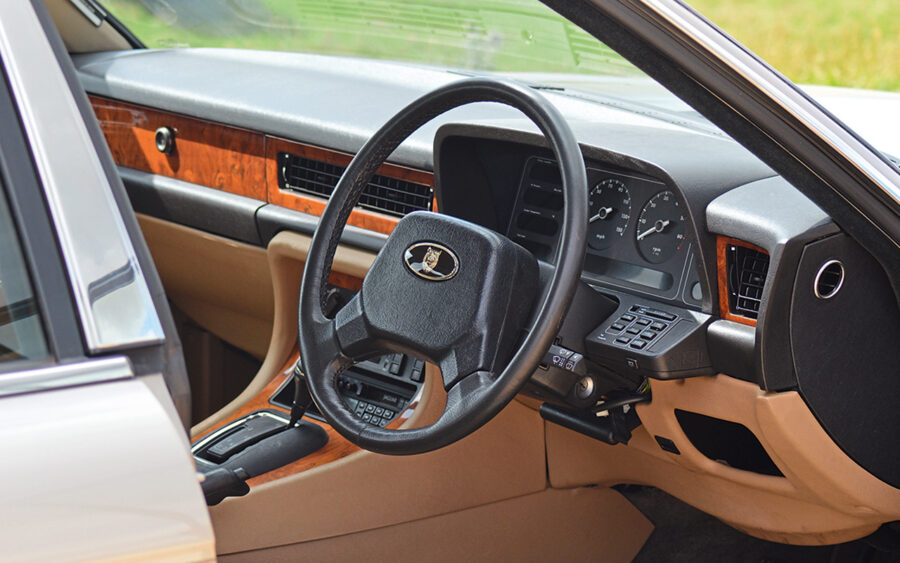
Later in 1993, the Sport specification was introduced to the XJ40 range, available on either the 3.2- or 4.0-litre cars, which were then badged as ‘S’. The main distinguishing features were the colour-coded grille slats, boot plinth and door mirrors, plus wider 7×16 five-spoke alloy wheels. Inside, meanwhile, the regular walnut veneer trim was replaced with darker rosewood and the car featured special gold badging.
The Sport was followed up in 1994 by the Gold, which was essentially an options package at a competitive price, featuring a gold-coloured grille and boot badges, standard leather (but without the pleats of other models), plus ‘Kiwi’ flat-faced diamond-turned alloy wheels. A Sovereign-style twin coachline also featured. In practice, both the Sport and Gold were run-out models, since the final XJ40 came off the line in August 1994 – after a total production run of 208,706 cars.
The XJ40 officially came to an end in August 1994, but the essence of the design that had taken so long to bring to market was destined to live on for eight years more – spanning two further generations of XJ, until the all-new aluminium X350 was ready for launch in 2002.
The XJ40 had in fact been scheduled for replacement by an all-new model codenamed XJ90, featuring a more traditional style. But as Jaguar designer, Fergus Pollock, told our colleagues on Jaguar World magazine recently, the budget wouldn’t stretch to a ground-up new car. The result was that parts of the XJ90 – essentially the nose and tail – were grafted on to the centre section of the XJ40, the result being the model that we know as the X300.
It might sound like a recipe for disaster but the X300 was a resounding success – and with Ford’s input in production design, the reliability issues of those early XJ40s were finally silenced. Indeed, the X300 is often cited as being the car the XJ40 could have been from the start. Then in 1997, all-new V8 engines were added to the mix to create the X308 model, at which point the original XJ40 interior and its unusual ergonomic control layout was finally replaced by a more traditional Jaguar style with the ‘horse-collar’ centre console. Behind the scenes though, it was still the XJ40.

